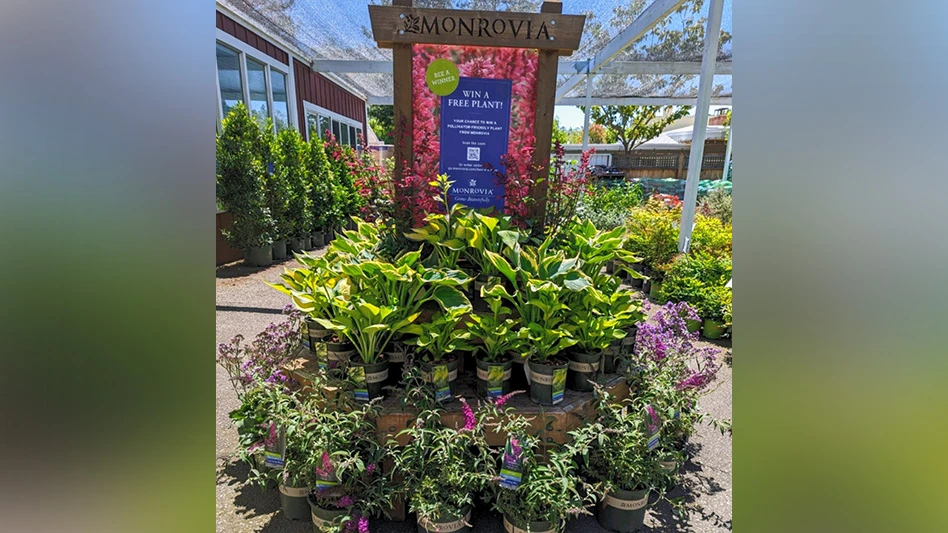
Adobe Stock, Cristina Ionescu
According to John Erwin, an extension specialist at the University of Minnesota, the horticulture industry faces growing challenges that separate it from traditional agriculture.
"You have to be advanced in understanding what makes plants flower,” he said during his presentation titled ‘Flowering Annuals and Perennials When You Want!’ at Cultivate’19 in Columbus, Ohio. “You take hundreds of varieties and species from all over the world and you have to try and get them to bloom, usually in one to two months’ time. That is much different than corn or soybeans. You have to be far more sophisticated in what you do. So what we need to do is we need to figure out these tricks to understand how to get things blooming in a certain amount of time.“
Here are three tips from Erwin, who also is a consultant for Altman Plants, for growers looking to fine-tune their flower production.
1. Understand the difference between ‘juvenile’ and ‘mature’ plants.
According to Erwin, juvenile plants are crops that are only capable of vegetative growth. In that stage of the growing process, he said, growers should not treat the plant if it’s ready to flower. Not only is it a waste of product, but it will also spur plant growth. 
To identify when a plant is ready to move from the juvenile stage to the flowering stage, Erwin recommended checking the nodes — the spot on the flower where the buds or leaves will originate. Each plant has a minimum number of nodes to be classified as mature.
2. Put your plant in the right group.
There are two types of irradiance (the density of radiation received on a plant) response groups, Erwin said. The first, Facultative Irradiance Response, means the, “leaf number below the first flower decreases as irradiance increases.” The second, radiance Indifferent Response, means there is, “no impact of increasing irradiance on leaf number below the first flower.”
One way growers can use this info is in determining if lighting will help their operation. If a plant is in the former group, there can be a benefit of increasing lighting to increase flowering, Erwin said. He noted that there is a limit of how much light can actually speed up growing, and finding that limit is key to keeping lighting costs under control. If a plant is classified in the second group, using HPS or LED lighting may not be helpful.
Additionally, Erwin said there are five plant classifications for growers to be aware of:
- Obligate Short Day Plant — plants only flower when grown under short days
- Facultative Short Day Plant — plants flower earlier and with fewer nodes below the first flower when grown SD than LD
- Obligate Long Day Plant— plants only flower when grown under long days
- Facultative Long Day Plant — plants bloom earlier with fewer nodes below the first flower when grown under LD compared to SD
- Day Neutral Plants — plants flower at the same time developmentally under SD or LD
According to Erwin, breeders and local extension specialists can help growers identify what category their plant falls under. The classification matters, he said, because growing a plan incorrectly — either in the plug or blooming phase — means grow times will be off. That can mean delays in growing, meaning orders can’t be filled on time.
This classification can apply to produce crops as well, Erwin said. Herbs, for example, are short day crops.
3. Know the right temperatures.
One common, avoidable mistake Erwin said he sees growers is make is growing their crops in a greenhouse that is either too hot or too cold. Even a short period of time in the wrong environment can negatively impact plant growth.
Vinca, Erwin said, is one crop he’s seen growers make numerous mistakes with. Vinca are best produced in a high-temperature greenhouse (68-78o F). But over several years, he’s seen growers put them in greenhouses that are too cold. When that happened, he said it delayed blooming by several weeks.
A number of ideal growing temperatures are available on Erwin’s website. He also recommends contacting the local extension specialists for any plants that aren’t on his list or during unique weather conditions that could impact the growing environmentLatest from Garden Center
- This Florida garden center's busiest days are in the fall, not spring. Find out how they do it
- Terra Nova Nurseries releases new agastache variety, 'Peach Pearl'
- The Certified Shopify Online Garden Center provides local retailers with ecommerce tool
- Meet the All-America Selections AAS winners for 2025
- Endless Summer hydrangeas and Suntory Senetti glam up Grammys red carpet
- Ball Seed releases 2025 edition of 'Thrive and Flourish' for landscape and garden retail
- American Floral Endowment's Fred C. Gloeckner Foundation Research Fund accepting grant proposals
- Floral Marketing Fund and CalFlowers partner to advance floral industry





